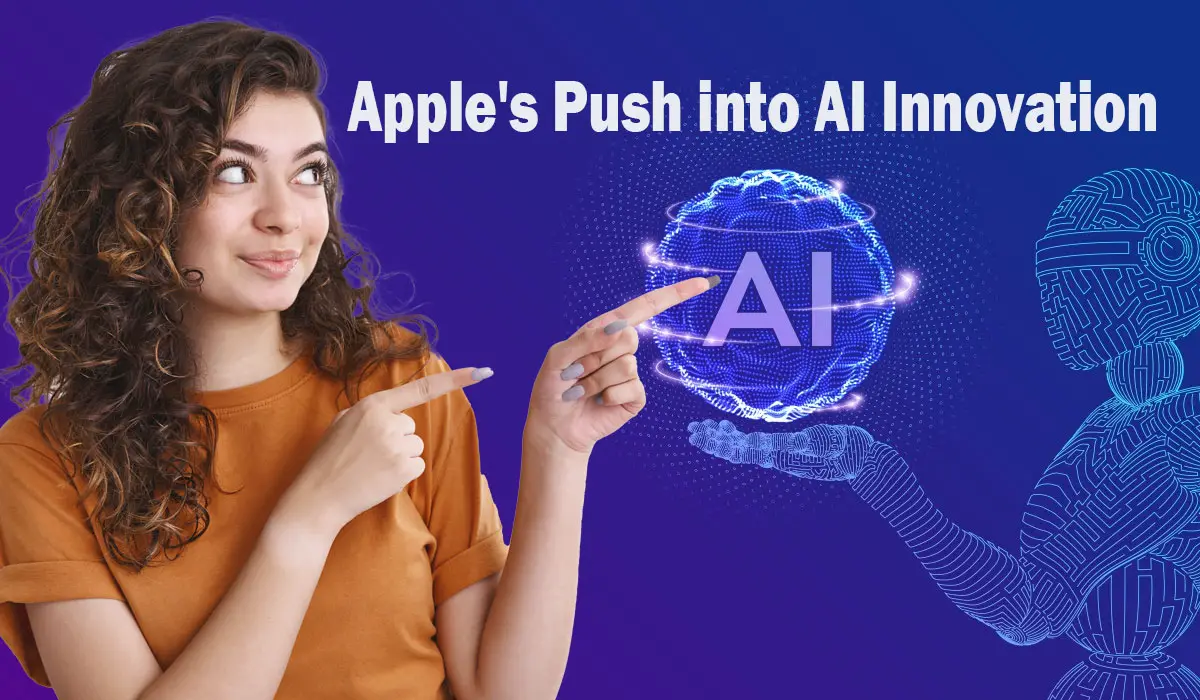As technology advances, artificial intelligence plays a pivotal role in shaping user experiences across various platforms. Apple, renowned for its innovative products and user-focused approach, now delves into the world of generative AI. The ambitious project, known as “Apple GPT,” aims to develop AI tools that rival the capabilities of OpenAI’s ChatGPT and Google’s Bard. This article explores the details of Apple’s AI endeavors, its goals, features, and potential differences compared to its competitors.
Apple GPT: Building Language Models and Chatbots
Large Language Models for Empowering AI
Apple’s foray into AI involves constructing large language models capable of understanding and generating human-like text. These models serve as the backbone of “Apple GPT,” enabling it to process vast amounts of data and deliver contextually relevant responses.
Project Scope: Internal Chatbots and Beyond
The scope of Apple GPT extends beyond language models. The company also focuses on internal chatbots, facilitating seamless communication and support for users. By incorporating AI-driven chatbots, Apple aims to enhance user interactions and improve overall user experiences.
Replicating Existing Models? Reports Say So
While Apple’s AI aspirations are commendable, some reports raise concerns about Apple GPT’s originality. It is suggested that the AI tool might not introduce any groundbreaking features, potentially replicating existing models. However, the accuracy of these reports remains to be verified.
Apple’s AI Goals: User Experience and Privacy
Enhancing User Experiences
One of the primary objectives behind Apple GPT is to elevate user experiences across its ecosystem. By leveraging advanced AI capabilities, Apple aims to provide users with personalized and engaging interactions with their devices and applications.
Unique, User-Engaging Experiences
Apple envisions AI tools that can create unique, tailor-made experiences for users, catering to their preferences and requirements. This focus on personalization aims to strengthen the bond between users and Apple’s ecosystem.
Prioritizing User Privacy
Privacy has been a core principle for Apple, and this philosophy extends to its AI initiatives as well. Apple GPT is being developed with strict privacy protocols to ensure that user data remains secure and protected.
Read Also: How to Use ChatGPT for Option Trading?
Apple’s AI Offerings and Developer Tools
Similar Ambitions to OpenAI and Google
Apple’s AI endeavors aim to bring its offerings on par with those of industry giants like OpenAI and Google. By developing sophisticated AI tools, Apple seeks to provide users with a seamless and innovative AI experience.
Create ML: Empowering Developers with AI
To support the development of AI-powered applications within the Apple ecosystem, the company introduced “Create ML.” This developer tool enables app creators to harness the power of machine learning while ensuring user data stays on their devices.
Unveiling Generative AI Tools
In its quest to rival OpenAI’s ChatGPT and Google’s Bard, Apple is actively testing and developing generative AI tools. These tools aim to deliver exceptional AI-generated content and interactions for users.
Key Differences Between Apple GPT, ChatGPT, and Google Bard
| Aspect | Apple GPT | ChatGPT | Google Bard |
|---|---|---|---|
| Availability | Not Yet Publicly Released | iOS Application Available | No Dedicated Apple App Yet |
| Language Models | Large Language Models | GPT 3.5 and GPT 4 | LaMDA |
| Data Sources | Limited Pre-defined Data | Pre-defined Data Since 2021 | “Infiniset” with Real-Time Access to the Internet |
| Features | Unique Features and Capabilities | Sidebar Conversations | Natural Conversations |
Unanswered Questions and Future Prospects
Apple’s AI tools are still in development, leaving many questions unanswered:
- Release Date: When will Apple’s AI tools become available to the public? While Apple is actively working on the project, an official announcement or timeline is yet to be disclosed.
- Originality and Uniqueness: Despite concerns about possible model replication, Apple might introduce innovative features to set its AI tools apart from the competition.
- Advancements and Updates: As Apple continues its AI research, there may be more details and updates on the project, driving the evolution of its AI offerings.
FAQs (Frequently Asked Questions)
Q: Will Apple’s AI tools be available for all devices?
A: While Apple GPT’s target is to enhance user experiences within the Apple ecosystem, the possibility of cross-platform integration remains uncertain.
Q: Can developers access Apple GPT for their applications?
A: At present, Apple provides developers with the Create ML tool, which enables AI-powered apps within the Apple ecosystem. Specific access to Apple GPT remains unconfirmed.
Q: Will Apple GPT match the capabilities of its competitors?
A: Apple’s AI ambitions aim to rival the capabilities of OpenAI’s ChatGPT and Google’s Bard, potentially offering comparable experiences.
Q: How will Apple prioritize user privacy with AI tools?
A: Privacy is a core principle for Apple. Apple GPT will incorporate robust privacy measures to protect user data while delivering personalized experiences.
Q: What is the main objective of Apple’s AI initiatives?
A: Apple aims to improve user experiences and provide unique, user-engaging interactions through its AI tools while ensuring data privacy.
Q: When can we expect the official announcement of Apple GPT’s release?
A: Apple has not disclosed an official release date for its AI tools, keeping the public eagerly awaiting future announcements.
Conclusion: Apple’s AI Journey Awaits Unveiling
As Apple continues testing and developing generative AI tools under the “Apple GPT” project, the world anticipates the unveiling of its next-generation AI offerings. By aiming to rival OpenAI’s ChatGPT and Google’s Bard, Apple seeks to revolutionize user experiences within its ecosystem while prioritizing user privacy. As more details emerge, the tech community eagerly awaits the official announcement of Apple GPT’s release and the potential advancements it may bring to the AI landscape.

